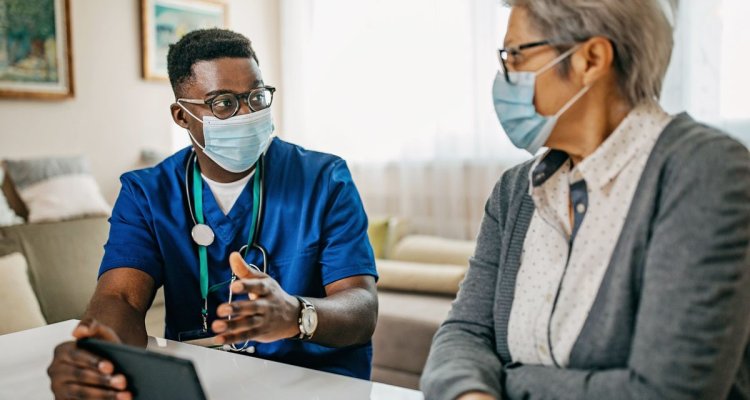The Role of a Fall Prevention Program in Enhancing Elderly Safety
By addressing physical, environmental, and emotional factors, these programs empower older adults to live confidently and safely in their homes and communities.
Share this Post to earn Money ( Upto ₹100 per 1000 Views )

As individuals age, maintaining balance and mobility becomes increasingly challenging. Falls are one of the most significant health risks for older adults, often leading to injuries, hospitalizations, and a diminished quality of life. A well-structured fall prevention program is essential to mitigate these risks, ensuring safety and independence for seniors.
Understanding Fall Risks in Seniors
Falls are not random occurrences but are often influenced by a combination of intrinsic and extrinsic factors. Intrinsic factors include age-related physical changes, chronic health conditions like arthritis, and reduced muscle strength. Extrinsic factors involve environmental hazards such as uneven flooring, poor lighting, and cluttered spaces. Recognizing these risks is the first step toward effective prevention.
Key Components of a Fall Prevention Program
A comprehensive fall prevention program incorporates several critical elements tailored to individual needs:
1. Physical Assessments
Identifying risk factors through regular health screenings is vital. Assessments for balance, gait, vision, and hearing help healthcare providers understand vulnerabilities.
2. Strength and Balance Training
Exercises that improve muscle strength and balance, such as tai chi and yoga, are integral to reducing the likelihood of falls. Structured physical therapy sessions also play a crucial role in enhancing mobility and stability.
3. Home Safety Evaluations
Environmental modifications like installing grab bars, improving lighting, and removing tripping hazards are effective in minimizing risks. These adjustments create a safer living space for seniors.
4. Medication Management
Certain medications can cause dizziness or drowsiness, increasing fall risks. Regular reviews by healthcare professionals ensure that prescribed drugs do not compromise safety.
5. Assistive Devices
Walkers, canes, and other mobility aids provide additional support, particularly for individuals with compromised balance or mobility issues.
The Psychological Benefits of Fall Prevention
Beyond physical safety, a fall prevention program has profound psychological benefits. The fear of falling can lead to reduced physical activity and social isolation. By addressing risks, seniors gain confidence, allowing them to lead more active and fulfilling lives.
The Role of Family and Caregivers
Family members and caregivers play a pivotal role in supporting the success of a fall prevention program. Regular communication with healthcare providers, assisting with home modifications, and encouraging participation in exercise routines are vital.
Community Resources for Fall Prevention
Many communities offer resources to aid in fall prevention. Local senior centers, fitness programs, and health organizations often host workshops and exercise classes tailored to elderly individuals. Utilizing these resources ensures access to professional guidance and peer support.
FAQs
1. What is the primary goal of a fall prevention program?
The primary goal is to reduce fall risks by addressing physical, environmental, and psychological factors, thereby improving overall safety and quality of life for seniors.
2. How often should fall risk assessments be conducted?
Fall risk assessments should ideally be conducted annually or more frequently for individuals with existing health concerns or a history of falls.
3. Are fall prevention programs only for seniors?
While they are primarily designed for older adults, individuals recovering from surgery or living with conditions that affect mobility can also benefit.
4. What exercises are best for improving balance?
Exercises like tai chi, yoga, and leg-strengthening routines are highly effective for enhancing balance and reducing fall risks.
5. Can technology assist in fall prevention?
Yes, devices like fall detection systems, wearable trackers, and smart home solutions can enhance safety by monitoring movement and providing emergency alerts.
Conclusion
Implementing a fall prevention program is not just about avoiding accidents; it’s about fostering independence and enhancing the quality of life for seniors.
















